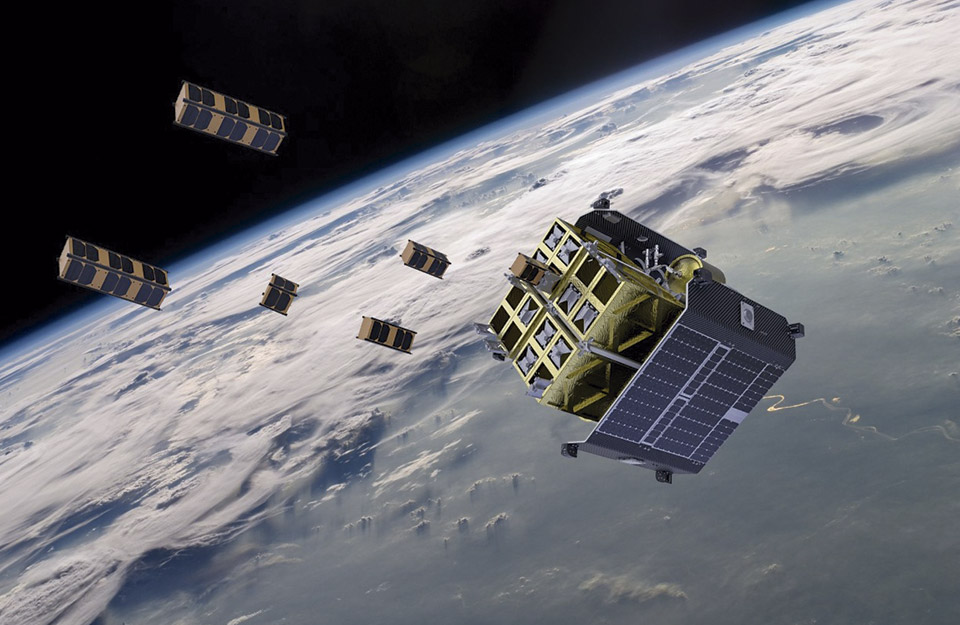
Chile’s history in space dates back several decades and encompasses various milestones, including the launch of three different satellites. Three years ago, the creation of a National Satellite System (SNSat) was announced, which will include a constellation of 10 satellites to replace the FaSat-Charlie that is currently in orbit.
They measure 10x10x30 cm and weigh no more than three kilos. SUCHAI-2, SUCHAI-3, and PlantSat are the three new nanosatellites from the Universidad de Chile Space Program, which will take off from Cape Canaveral (United States) aboard the Falcon-9 rocket. The rocket, owned by South African entrepreneur Elon Musk’s SpaceX company, has been given the mission of carrying out biological, information and communication systems, and space physics experiments.

This is a new milestone in Chile’s space exploration, an area that is no stranger to our country. Although not many people know, Chile’s relationship with space began in 1959, a decade before Neil Armstrong’s famous words from the surface of the moon: “that’s one small step for man, one giant leap for mankind.” That year, NASA installed one of the world´s first satellite tracking stations in the northern Chilean city of Antofagasta, with the aim of supporting the probes sent by the United States’ first missions into space.
Two decades later, in 1980, the Space Affairs Committee was created. It was one of the first organizations that sought to regulate the sector through public policies. Over the years, the organization has changed, and on March 15, the Official Gazette announced the creation of the Presidential Advisory Commission on Space Matters, marking the beginning of new space governance for Chile. The commission includes the participation of five ministries (Science, Foreign Affairs, Defense, Interior, National Assets) and an undersecretary’s office (Telecommunications).
Satellite exploration
Although SUCHAI-2, SUCHAI-3, and PlantSat are among the most advanced nanosatellites that have been developed in our country, they are not the only missions of their kind that have emerged from Chile. In 1994, the Chilean Air Force designed a program that involved the launch of two microsatellites. First was FaSat-Alpha (1995), which failed to undock from the Ukrainian satellite on which it was traveling. Three years later FaSat-Bravo was launched from Kazakhstan. Its objective was to carry out geographic, climatic, and economic resource studies of the country. After obtaining more than 1,000 photographs, it stopped operating in 2001.
At the beginning of the last decade, FaSat-Charlie (2011) was launched to carry out terrestrial observation. Finally, in June 2017, the first artificial satellite designed and developed in Chile, SUCHAI-1 (Satellite of the University of Chile for Aerospace Investigation), was launched from India. It was the first nanosatellite developed by the Universidad de Chile’s Faculty of Physical and Mathematical Sciences, and laid the foundations for the university´s space program. The nanosatellite continues to orbit the Earth today.

In 2019, the creation of a National Satellite System (SNSat) was announced, which includes 10 satellites that make up a national satellite constellation. They will replace FaSat-Charlie, which is currently in orbit, having come to the end of its lifespan five years ago. As part of this system, the construction of three 100kg minisatellites and seven microsatellites weighing up to 20kg has been scheduled. The first three mini-satellites (Fasat Delta, Fasat Echo 1, and Fasat Echo 2) will be launched over the coming years by Elon Musk’s company. Meanwhile, the seven microsatellites, which will be built in Chile together with Chilean universities, will be launched between 2023 and 2025.
Additionally, the inauguration of the National Space Center (CEN) is scheduled to take place this year in Santiago’s Cerrillos municipality. The center will include four areas: a laboratory to manufacture satellites and payloads; a space mission control center; a center for the analysis and processing of geospatial information; and a center for space entrepreneurship and innovation.
For this center to operate, three monitoring stations will be set up in Antofagasta, Santiago, and Punta Arenas, which will allow the satellites in the national constellation to be controlled and images to be downloaded in real time.





